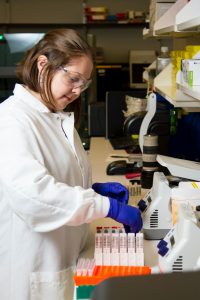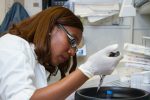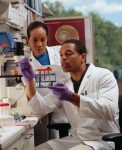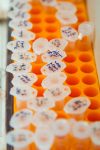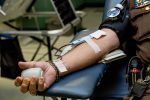As we all know, drawing blood is extremely important for detecting diseases and their treatment, and if not done correctly, this can cause significant harm to the patient.
For that matter, our team has done fundamental research that covered all the stages of a blood draw.
First of all, your workplace should provide you with all the necessary equipment, starting with the most important one, the anti-infection equipment.
Learning how to draw blood is essential to becoming a phlebotomist.
And to do that, you have to understand and follow the proper steps for collecting blood – from collecting the right equipment to transporting the sample to the lab.
This fun and informative guide describes the step-by-step blood sampling process and makes an excellent reference for students and experienced professionals.
Here we can mention:
- Alcohol or alcohol swabs
- Gauze
- Non-sterile gloves
Subsequently, we need tools with which we can draw blood and ones in which we can store it.
Here would belong:
- Unused and previously disinfected syringes and needles
- Blood collection tubes
- Transportation bags and sharps container
And finally, we should write the results from the test somewhere.
In that case, we’ll use laboratory forms and blood-specimen labels.
Page Navigation
Interviewing the Patient
While interviewing the patient, you’ll need to make sure he feels as comfortable as possible so that the entire procedure could be done more efficiently.
Try to get into a conversation with the patient by introducing yourself and look for verbal consent by explaining to the patient the whole process.
Preparing the Patient
By inspecting patients’ already extended arms, you’ll need to look for the median cubital vein, which is usually easily noticeable.
Then you’ll need a tourniquet so you can apply pressure 3 to 4 inches above the vein.
Disinfection Phase
To prevent possible infection, first, you will have to disinfect your hands.
You do that by carefully washing them with soap and water and then drying your hands with a clean towel.
If this is not possible, you can clean your hands with an alcohol rub.
Consequently, you’ll have to place a clean paper underneath the arm.
Then you’ll have to disinfect the patient’s venipuncture site with a 70% alcohol swab.
To reduce contamination, you’ll need to make sure that the area has dried.
Then comes the crucial phase.
Blood Draw
Blood drawing is a delicate process, and you need to be very careful when performing it.
Before starting the procedure, the patient needs to ball his hand into a fist.
Then without touching the venipuncture area, you slowly approach the vein.
You have to position the needle at 30 degrees or less.
Then when you are ready, quickly puncture the vein.
Once you collect the blood, you’ll have to take the needle out.
But not before you take off the tourniquet.
Once you take the needle out, take a gauze and apply pressure to stop the bleeding.
Tube Filling
If you need to collect multiple tubes of blood for the patient’s need, make sure you use evacuated tubes with a built-in needle and tube holder so that you could fill the tube directly.
But if you do not have such tubes, you could use a winged needle set or a syringe.
The next step is to apply steady pressure by piercing the tube stopper with the needle.
To reduce hemolysis chances, you’ll need to be careful not to press the syringe plunger when piercing.
The final step is to invert a specified number of times the tubes that contain additives.
The End of the Procedure
Once you are certain that the blood is stored in the tubes, you’ll need to discard all the equipment that is blood-related in exceptional, puncture-resistant containers,
Dispose of used equipment in a drilling-resistant container (usually a sharps container).
Items that have not touched blood may be disposed of in a general waste container depending on national or local regulations, including:
- syringes
- needles
- gloves
- gauze
*any non-blood-related waste can be disposed of in a general waste container.
The next thing to do is to go to the patient and let him know that the procedure is now complete and ask him if he feels right or has any abnormal symptoms, and if he does not feel right, he should receive extra medical help.
The final step is to double-check if the forms or the labels are filled in completely and precisely.
Only then you can go and clean your hands using the above-mentioned method.
Sorting the Samples
It would help if you were supplied with the necessary equipment to perform this phase adequately.
You will need the following:
- Leakproof bag for more accessible transport of the samples
- Rack
We use the rack if we have multiple sample tubes, and it is used to avoid any breakage and any cross-contamination.
Outside Pocket or Compartment
Like the rack, the outside pocket reduces cross-contamination, too.
By leaving all the papers and forms there, we have reduced the danger of contamination by 40%.
Cleaning Up
Maybe the most crucial phase of all is killing all the pathogens which the blood can spread.
In that case, you’ll need the following equipment:
- Gloves
- Apron or gown for any spillage
- Paper towels to soak up and discard blood spillage
- Wet cloth to clean the spill
- Chlorine bleach
We often use 5.25 chlorine bleach diluted by water to clean the affected areas.
Before you wipe it up, it needs to sit on the surface for no longer than 10 minutes.
This page is also available in Spanish.

